- 29-06-2017 -
DICK MARTIN
this would have been his 90th birthday
Dick Martin was born in Chicago on June 29, 1927 as Dickinson
P. Martin. There's not much information known about him, so for this xpo we had
to rely on the info that we could find on different sites at Wikipedia. We have
tried to get some more personal information about this artist at the CPCC, but
among the active members of this playing card collectors club from Chicago there
was no one left who had actually met Dick at one of the conventions. Even though
Barbara Lunaburg was very helpful and has contacted people who could possibly
have known him or friends of him none of them had any recollection to share.
Dick Martin must have been an active member of the
CPCC
since the 1950's. The club was apparently founded in 1951, as Dick has designed
a special deck for their 10th anniversary in 1961. The deck was presented as
"Fact & Fancy" and was published in a limited and numbered
edition of 600 decks. The deck consists of 52 cards, a joker and a numbered
title card . It comes in a wrapper. The subtitle is "Deck of Decks"
and the pip cards have illustrations that refer to specific antique decks. Each
court card presents a character, related to playing cards, although in different
ways. The deck comes with an explicative simple booklet. We'll quote from that
in describing the figures or decks.
Already around 1960 Dick Martin must have developed a more
powerful passion than that for playing cards. He became a collector of OZ
memorabilia and we assume that this new passion has slowly replaced the playing
card hobby. He has designed a second deck for the CPCC in 1971 to commemorate
their 20th anniversary, but in the 1970's he got more and more involved in the
International Wizard of Oz Club and it has never come to designing a third deck
for the CPCC in 1981. He was still active in 1988, when he illustrated the Oz
Sketchbook. He died on February 14, 1990.
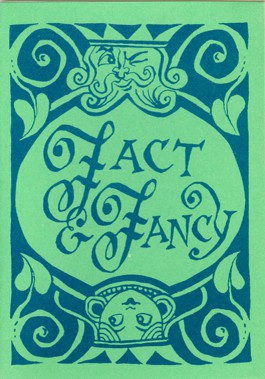 |
The cover
of the explicative booklet is made of thin carton and has the title of
the deck on front and the back design of the cards on the back.
Inside are
4 strips of thin white paper which are printed with 2 texts on both
sides. The booklet is held together with 2 staples.
Inside
each of the courts is described per suit with a short text. We'll quote
these texts here below.
The pip
cards are also described per suit, but only give the name, the
nationality and the year of the deck.
The
designs of the cards are done in a loose and humorous way and they were
printed in 3 colors on the same off-white thin carton as the cover of
the booklet. |

|
|
"Charles
VI of France the deranged monarch for whose diversion were painted, in
1392, the oldest known existing playing cards - which were hoped would
reclaim his wandering wits." |
"La
Pique Dame, countess Fedorovna, immortalized in Pushkin's tale. The
terror of the gaming rooms at the court of Versailles, she was said to
have sold her soul to the Devil for the three winning cards at
Faro." |
"Etteilla
- an eighteenth century French mystic (formerly a hairdresser named
Alliette) whose clap-trap theories on ancient magic created a vogue for
his fortune-telling cards." |
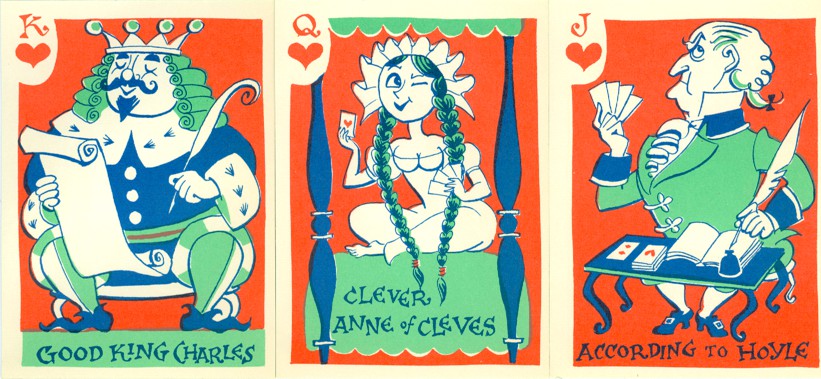 |
|
"King
Charles I of England who granted the Royal Charter to the Worshipful
Company of Makers of Playing Cards in 1628, and himself played with
cards of hand painted silk."
|
"Anne
of Cleves, fourth bride of England's Henry VIII, who dissolved an
unwanted marriage (and saved her neck) by beating him at cards on their
wedding night." |
"Edmond
Hoyle, England's High Priest of Card Games, whose book of rules has been
quoted, pirated and imitated for over 200 years." |
The ace of spades has
a special design. Here the reason for the deck is immediately made clear.
The other aces have the same layout as the pip cards
Each suit is dedicated to a certain kind of playing cards. Spades - historical
decks; Hearts - educational decks; Clubs - political decks and Diamonds -
fanciful decks.
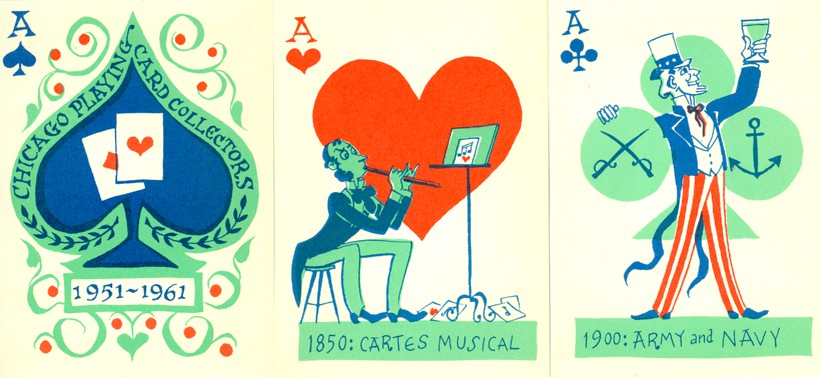 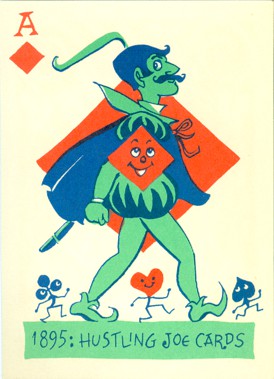 |
| America |
France |
America |
America |
Click the Ace to
see the pip cards of that suit.
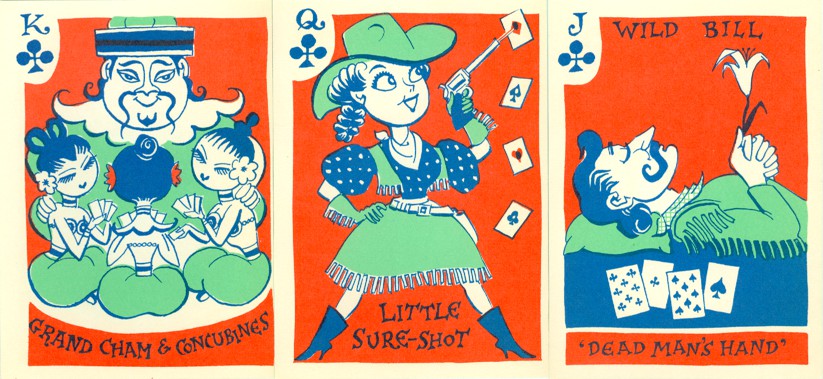 |
|
"The
Grand Cham of ancient Cathay who, according to an unlikely legend,
invented playing cards in A.D. 1120 to amuse his concubines and keep
them from quarreling." |
"Little
sure-shot, Annie Oakley, the star markswoman of Buffalo Bill's Wild West
show in the 1890's, whose feat of shooting the spots out of tossed-up
playing cards made her name the synonym for a punched complimentary
ticket." |
"Wild
Bill Hickok, colorful Old Western scout and U.S. marshal whose 'aces and
eights' Poker hand was immortalized in legend and song when a .45 bullet
ended his final game in 1876." |
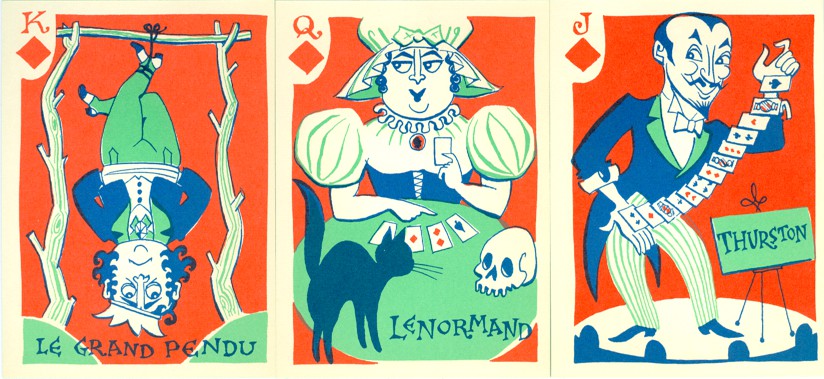 |
|
"Le
Grand Pendu, "'the Great Hanged Man', that unfortunate King of
Naples, whose execution in 1816 the seeress Mlle. Lenormand predicted
when he cut her cards to the King of Diamonds three times." |
"Mlle.
Lenormand, mysterious French fortune teller of the early nineteenth
century whose card predictions ruled the destinies of housewives and
Kings." |
"Howard
Thurston, that Wizard of Wonders who came to be known as 'the man who
mystified Herrman' - the stage's all-time master of card tricks." |
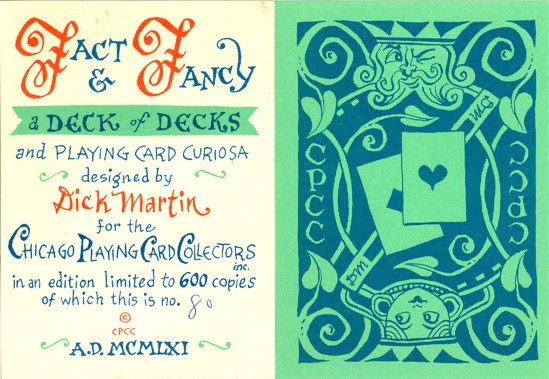
This deck
seems to indicate that Dick Martin as a collector also had an interest
in the history of playing cards and probably a general interest in
history too (see the Roman numerals to date the deck). Maybe not all of
his remarks on the courts are still correct, but our knowledge about
playing cards has much improved since 1961. |
"Le Mat - the traditional 78th card of the ancient Tarot
deck, who has survived the vicissitudes of some 600 years and is still
the extra card in our decks today." |
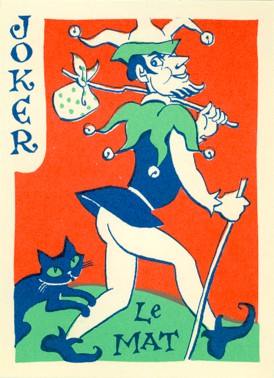 |
|
There are
also decks with a red back design instead of the blue as shown above. The
wrapper was a clever design that could be used for wrapping both kind of
decks. Just fold it differently and the right color is indicated on the
outside. |
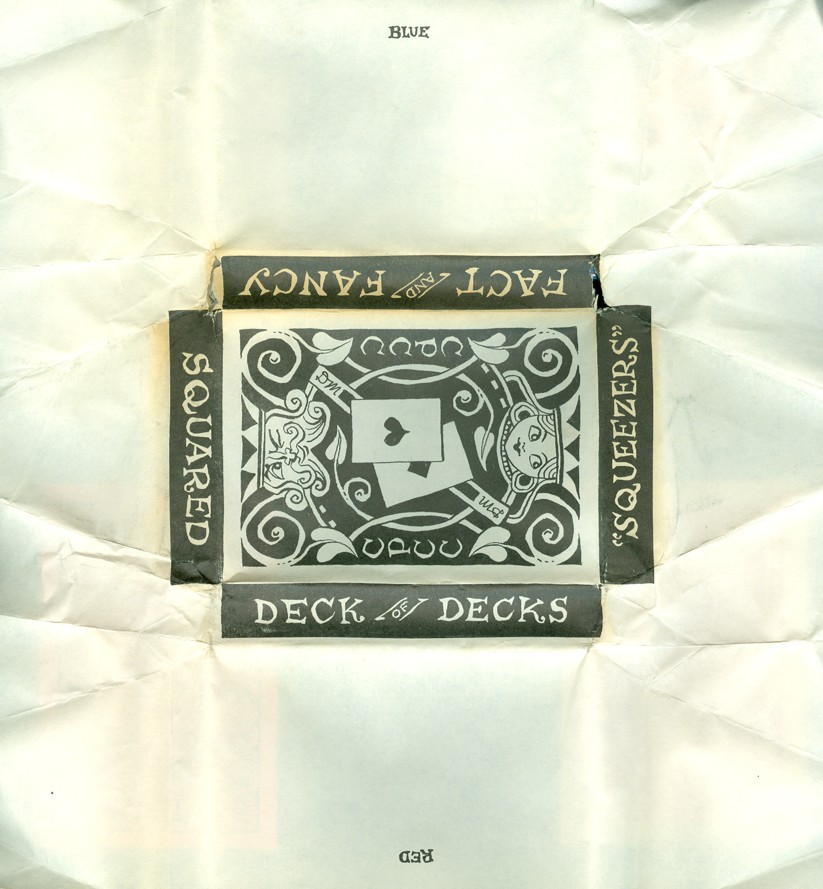
When we first
saw his decks we were both immediately attracted by his style, technique and use
of colors. As a professional illustrator he managed a few styles, but
his designs are often mildly humorous and done in loose, but determined strokes
in a clear line style.
For the CPCCC he has designed a second deck and although the style is different
his technique is basically the same. The deck is presented on the next page.
-01-
-02- -03-
ARTHOME









